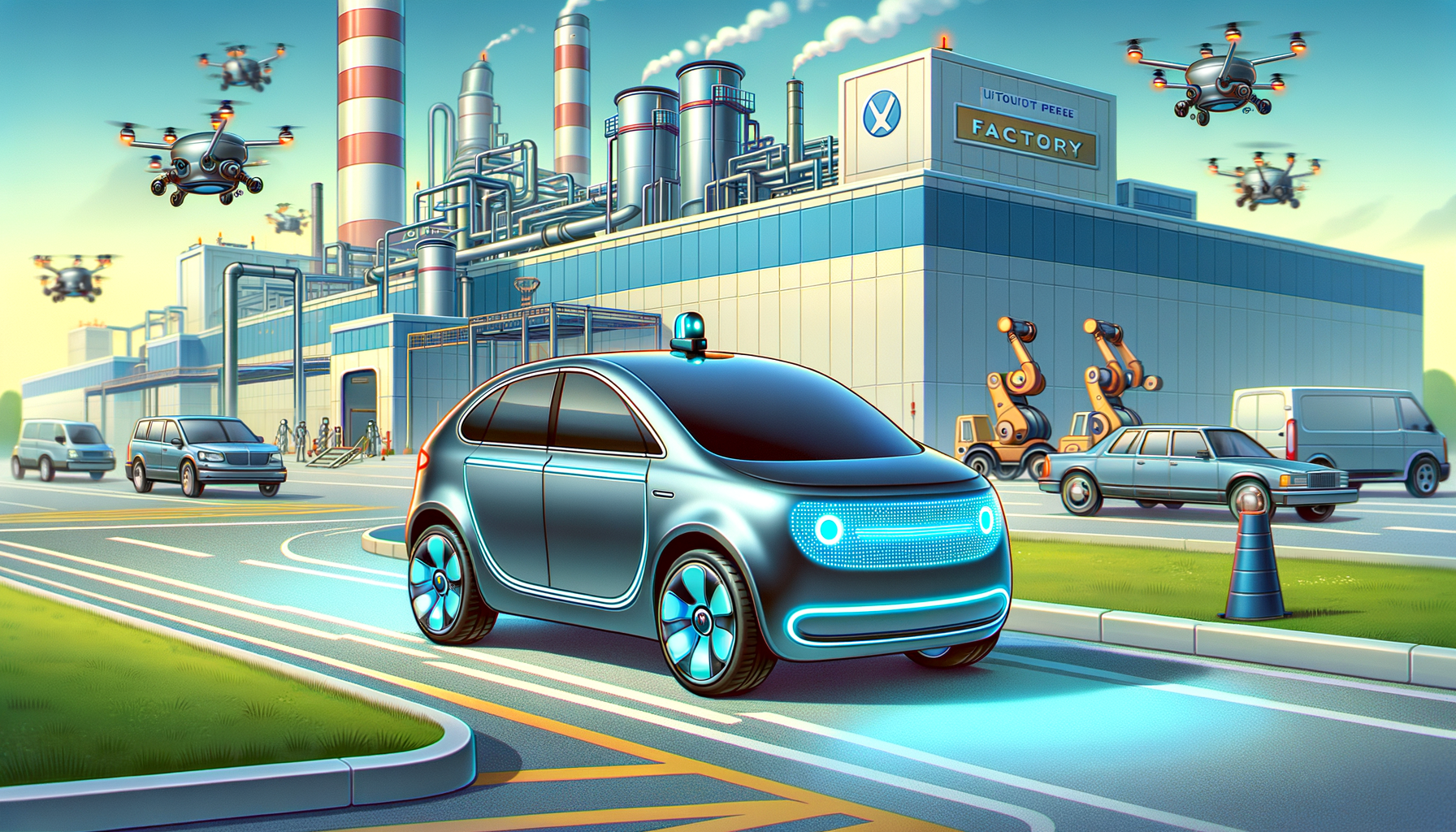
No Driver Needed: Tesla’s Giga Texas Vehicles Now Handle Their Own Commute to the Outbound Lot
🚗 Imagine parking your car and watching it drive itself to a parking spot. Now imagine an entire factory’s worth of cars doing that daily. Welcome to Tesla’s latest flex.
Tesla’s Gigafactory Texas just hit a new automation milestone: Model Y and Cybertruck vehicles now autonomously navigate from the assembly line to the outbound lot—no human drivers required. This isn’t just a flashy party trick; it’s a sneak peek into a future where logistics are the software, and Tesla’s Full Self-Driving (FSD) tech is rewriting the rulebook.
🤖 From Factory to Parking Lot: The Rise of Tesla’s Autonomous Logistics
Let’s break this down. At Giga Texas, Tesla has deployed its FSD-powered system to automate the final step in vehicle production. After rolling off the assembly line, cars activate their own autonomy to travel roughly 0.5 miles to an outbound lot. This process mirrors a similar system at Tesla’s Fremont factory but with “significant software improvements” (per internal sources).

Tesla’s Model Y: Now with a side of logistical independence.
Why does this matter?
- Efficiency: Humans need breaks, coffee runs, and Spotify playlists. Robots don’t.
- Cost: Fewer drivers = fewer payroll headaches.
- Data Collection: Every autonomous trip feeds Tesla’s neural networks, sharpening FSD algorithms for public roads.
Tesla isn’t just building cars; it’s building a transportation ecosystem. And if you’re wondering how many jobs this eliminates, ask yourself: When’s the last time you mourned the extinction of elevator operators?
🚀 Beyond the Factory: How Tesla’s FSD Is Disrupting Logistics
Tesla’s factory automation is a microcosm of a larger revolution. Autonomous vehicles (AVs) are projected to reduce last-mile logistics costs by up to 40% (Supply Chain Today) and slash delivery times by optimizing routes in real time. But while startups chase self-driving delivery vans, Tesla’s approach is uniquely scalable:
- Same Tech, Multiple Applications: The FSD hardware in your Model Y is identical to what’s guiding Cybertrucks at Giga Texas. Once perfected, this tech could seamlessly transition to robotaxis, long-haul trucking, or even .
- Overtake on Autopilot: Competitors like Waymo rely on geofenced areas. Tesla’s vision? A generalized system that works anywhere there are roads.

Cybertruck: More than just a stainless-steel flex.
Critics argue Tesla’s “beta” labeling is a liability shield, but let’s be real: Innovation moves faster than bureaucracy. As DHL notes in its autonomous logistics podcast, companies embracing AVs early will dominate the next decade of supply chains.
🔮 The Road Ahead: Robotaxis, Regulatory Hurdles, and Why Austin Matters
Tesla’s next move? Unsupervised FSD testing in Austin, paving the way for its long-awaited robotaxi fleet. Elon Musk has teased a “Cybercab” reveal on August 8, and if Giga Texas’ automation is any indication, Tesla’s robotaxis will lean heavily on factory-tested logistics AI.
But here’s the catch:
- Regulators Are Nervous: The NHTSA recalls 362,000 cars over FSD risks, then approves the same system months later. Consistency, anyone?
- Public Trust: A recent Tesla crash involving a passenger "napping" in the driver’s seat (TT News) highlights the uphill battle for acceptance.
Still, Tesla’s strategy is clear: Deploy, iterate, repeat. While legacy automakers play checkers, Tesla’s playing 4D chess—using factory floors as training grounds for real-world AI.
😎 Final Thoughts (and Memes)
Let’s not overcomplicate this. Tesla’s latest move isn’t just about cars parking themselves. It’s about normalizing autonomy—one factory, one city, one FSD update at a time. Sure, there’ll be hiccups (looking at you, 2022 “phantom braking” incidents), but as someone wise once tweeted, “Failure is an option here. If things are not failing, you are not innovating enough.”
And hey, if you’re worried about robots stealing jobs, remember: Someone’s gotta build, code, and meme-ify those robots. Speaking of which…

The internet: Never not commenting.
So, what’s next? More factories. More data. More FSD updates that make your car slightly less confused about why that plastic bag is crossing the road. Stay tuned—the future’s on autopilot.